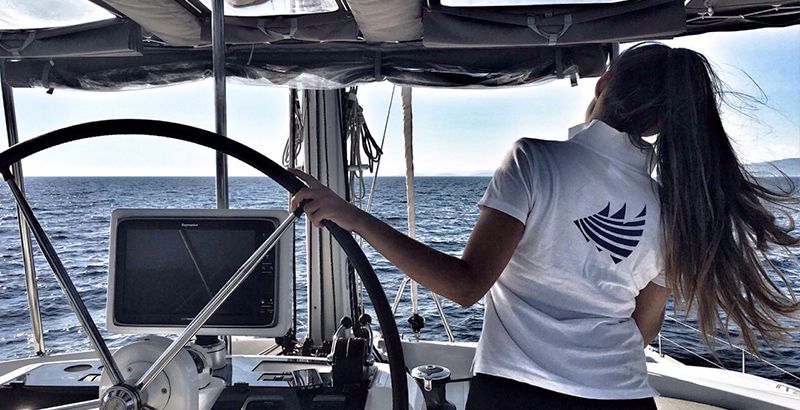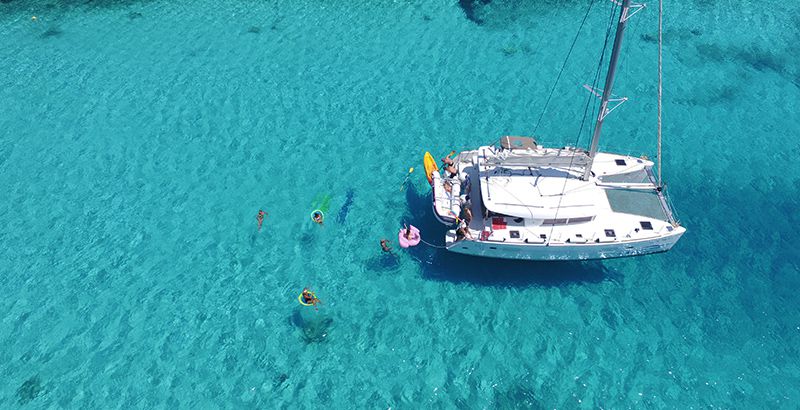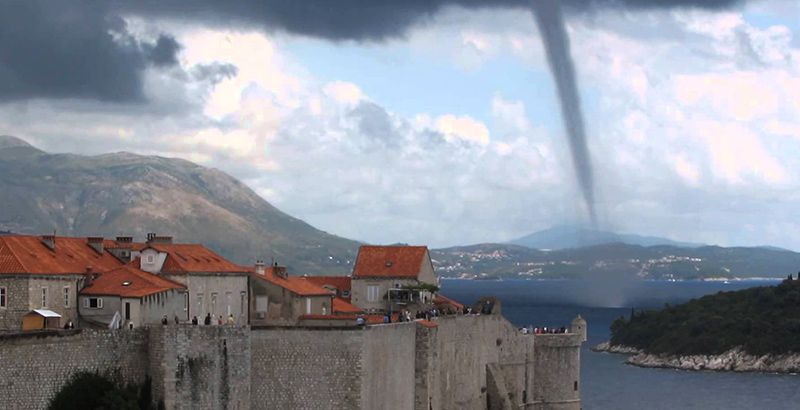We use cookies, along with some third-party sites (like Google, Facebook, etc.). By continuing to visit this site you agree to our use of cookies.


- Search Yachts
- Destinations
- Company
- Sailing info
- Blog
Need help? Contact us
In fact, it can be deadly. A study from the Rhode Island Hospital concluded that sailing is more dangerous and has a higher fatality rate than skiing and snowboarding combined with NFL football.
In fact, the US Coast Guard has reported that there were 841 injuries and 271 fatalities among sailors between 2000-2011.
My goal here is not to be alarmist—just to dissuade newbie sailors from going out bareboat in a Croatia charter boat.
The reality is that we take risks with our lives every day. You take a risk when you get behind the wheel of your car and drive to the grocery store. You take a risk when you stand in front of the stove and cook a meal. Just because an activity is risky does not mean you shouldn’t do it. The key to getting the most out of life is not to avoid risk entirely. The goal is to do what you can to intelligently mitigate it so that you protect yourself and have a great time.
With sailing, to some degree, you are putting yourself at the mercy of nature. That is not as true as it was in the olden days since we now have motors on sailboats, but you still need the wind and waves to cooperate with you to arrive safely at your destination.

Before you decide to go sailing (especially on your own), you should make sure that you have at least some practical experience. That means taking one or more classes from a licensed instructor. The more classes you can take, the better.

While you are sailing in Croatia, it is not expected that you will wear a personal flotation device at all times. Still, there are many situations where you should be wearing one that you might not even think about. For example, imagine that you need to get to the shore from your boat in calm sea conditions. It might seem like nothing to you to just climb in your dinghy and go.
In most situations, you would be fine. But what if something unexpected happens? What if another vessel suddenly comes by and upsets the dinghy, or causes you to fall in the water while you are trying to climb inside?
If there is a strong riptide off the shore, and you could conceivably be dragged away from both the dinghy and your charter vessel. This is a dangerous situation regardless, but it is especially so if you are not wearing a flotation device and panic.
This is why in doubt, you should always wear your personal flotation device, just to be on the safe side. Remember, the ocean is unforgiving.

This goes back to the scenario described above. You might think that sailing is only dangerous when conditions are harsh. But this is not true. Sailing can be quite dangerous even when the weather is calm—sometimes especially so.
This is why you should always be focused on safety, and always be taking extra precautions. You do not have to be caught in the middle of a fearsome storm for the sea to claim you.

This is not a specific safety recommendations are much as a learning technique. While you are sailing, and things are relatively calm, run disaster scenarios are your head. For example, say you are relying on your motor at the moment. What if it abruptly died? What would you do to get where you are going safely? What if you were washed overboard right now? How would you get back to the boat?
The point of doing this is not to scare yourself. It is simply to get yourself into the survival mindset. Not only does it make it more likely that you might actually know what to do if the unexpected were to occur, but it also means that you may be psychologically more prepared to take immediate action should something go wrong.

Another thing you can do to stay safe on the water is quite simple, and that is to avoid alcohol while you are sailing. Try to confine your drinking to when you are visiting Croatia's lovely towns. Only drink on the boat if there are others who can take over your duties until you are sober again.

If you are sailing in a smaller boat, it is smart to stay away from larger vessels in harbors and marinas. The wakes of these vessels can cause all kinds of problems, some of which can become quite serious.
On the other hand, if you are in a larger vessel, watch out for small, cramped marinas, like the ACI marina in Korcula. Marinas like these are decades old and were constructed when the average sailboat was much smaller. They have not been upgraded to accommodate larger vessels.

Always double check the weather right before you disembark from the marina. You should do this even if you already checked it the night before. Weather can change swiftly and unexpectedly in the Adriatic, and you do not want to be caught off guard. Check out our full guide on "How To Deal With Bura Wind".

Waterspouts are quite amazing to watch, but they are also very dangerous, and they may spawn off the coast of Croatia quite unexpectedly. They can completely overturn a small charter boat. If you do encounter one, you should roll up the sails, stow any lightweight objects, and head away from the shoreline. Put some distance between your boat and other vessels until the spout has passed.

Another thing that you need to do to stay safe when sailing is to study nautical charts in detail before you ever set out. There are shoals and rocks around Croatia's many islands which can be quite dangerous to your vessel if you do not know their exact locations. Likewise, there are some bridges (such as the Zdrelac bridge on Ugljan) which can be very difficult to clear.
It may be helpful to speak with locals about your travel plans before you set out on each leg of your journey. They can give you additional precautions that you might not get from a nautical chart or a guidebook.

Finally, perhaps the most important bit of advice I can give you is not to let your ego stand in the way of your safety. You might be thrilled at the thought of braving the high seas by yourself, but such an exciting adventure is not worth your life, or those of any passengers who you are responsible for.
Ultimately, you will have a lot more fun if you have a skipper or crew (read our article "Top 7 Reasons Why a Fully Crewed Yacht Charter is the Right Choice for Your Sailing Holiday in Croatia") to help you out if you need it. You can relax and enjoy your vacation without worrying constantly about your safety. Plus, you can learn a lot from your skipper and other crewmembers.
And maybe next time, you will be ready to go out bareboat and explore the Adriatic on your own. Either way, following the advice above will help you stay safe and enjoy your sailboat charter vacation in Croatia.
Sailing Routes: 7-Day Dalmatian Sailing Itinerary
Marin @Danielis - November 21, 2017.
5 House Rules You Should Follow Onboard While Sailing
Marin @Danielis - May 19, 2017.
Top Places to Go Snorkeling in Croatia
Marin @Danielis - February 16, 2017.
5 Reasons Why Sailing Is The Best Way To Travel
Marin @Danielis - July 25, 2017.
10 Tips on how to prepare for a Sailing Holiday in Croatia
Marin @Danielis - November 07, 2017.